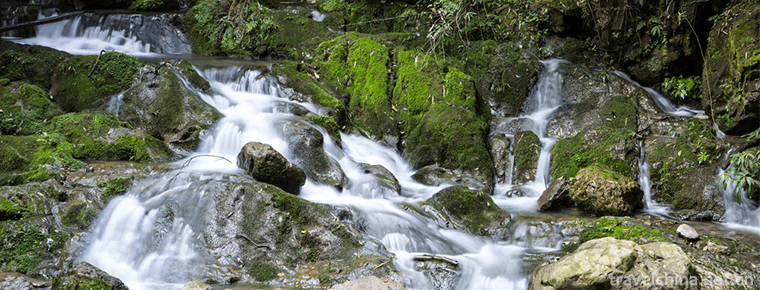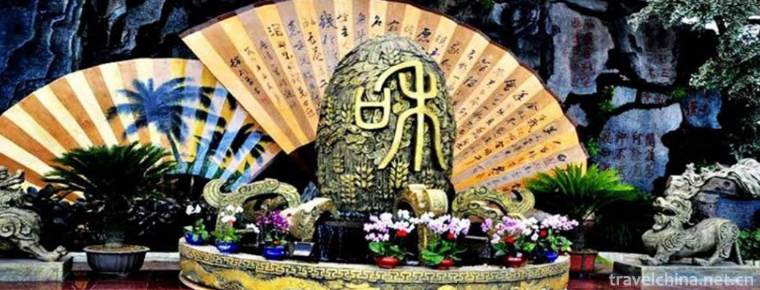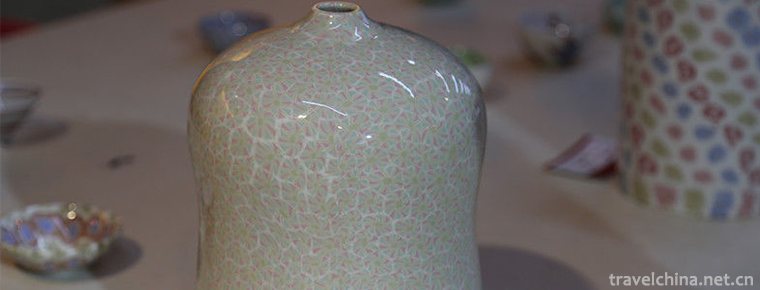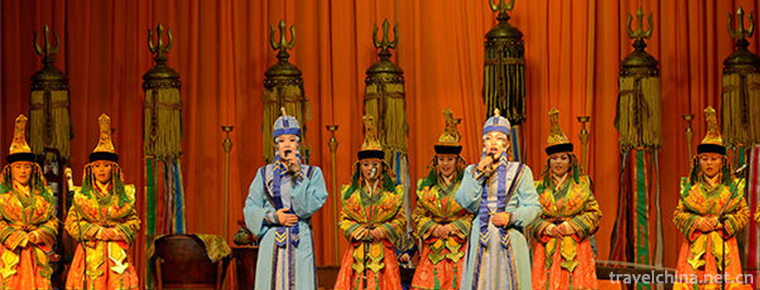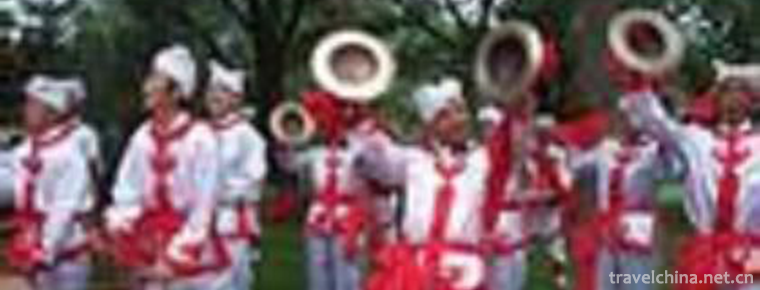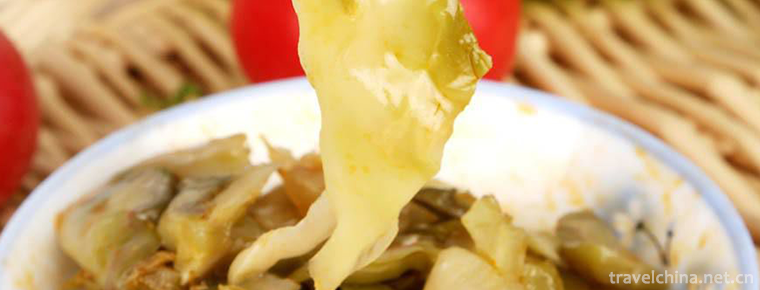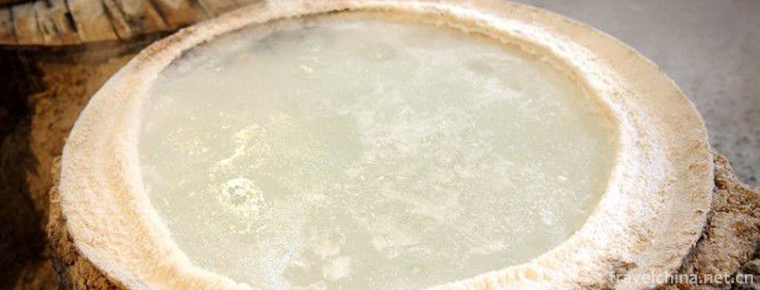Manchu Pearl Ball
Manchu Pearl Ball
Pearl ball is a traditional sport of Manchu, originally known as pearl picking, which originated from the ancient pearl picking production activities of Manchu. In the age of Taizu Nuerhachi in the Qing Dynasty, Manchu teenagers and young men living in the black waters of Baishan Mountain were celebrating the harvest while picking pearls. On the land, "Hydrangea" was compared to a large pearl. Pearl collectors tried to get rid of the defense of clam area in the water area and threw Hydrangea ball into the hands of their partners.
On June 7, 2008, the Manchu pearl ball was approved by the State Council to be included in the second batch of national intangible cultural heritage list.
The History of Pearl Balls
Pearl ball, formerly known as pearl picking, Manchu "Nichuh", is one of the competitive activities inherited by the Manchu people for more than 300 years. In the late Ming and Qing Dynasties, Nurhachi unified Nuzhen and changed its national name to "Qing Dynasty". The Qing government set up the Yamen in charge of animal husbandry in Ura area, which made it responsible for collecting various local specialties of tribute. Songhua River flowing through Ura region is rich in excellent pearls, known as "East Pearl". Every year, according to the law, the Ula cattle will be paid tribute to the court by picking pearls. This is a hard work done by a special animal hunter. Pearl picking activities must be carried out in late autumn every year. The mussel matures in the season. The animal hunter must dive below 15 meters below the bottom of the water to collect giant mussels and peel pearls. Every year, cattle are killed in the Yellow Spring. Moreover, during the period of picking pearls for six months, they were not allowed to go home. In order to pass off the lonely and hard days, they had a hard time and had fun. They created a kind of game item - picking pearls, which was later inherited by the Manchu people. It was called "pearl ball" as a sports event.
The outer shell of the pearl ball is made of leather or rubber. The inner shell is filled with gallbladder and the surface should be Pearl (white). The ball has a circumference of 54-56 centimeters and weighs 300-325 grams. The racket is clam-shaped and is made of resinous material with toughness. The net pocket is round with an inner diameter of 25 cm.
The netwriters of the Pearl Team played very well in the match.
Rules of the game
Manchu pearl ball competition rules are as follows:
1. Pearl balls are 54 to 56 centimeters long and weigh 300 to 325 grams.
2. The Pearl Court is 28 meters long and 15 meters wide. It is divided into water area (inner field area), clam area (blockade area) and Weihu area (scoring area).
In the water area (infield area), each side has four players responsible for attack and defense. The attacker can pass the ball in any direction and try to score from the net.
In Habeng District (blockade area), there are two sports teams on both sides, holding Habeng (racket) and blocking the opponent's attacking players from pitching into the net by blocking, blocking, clamping and pressing technical actions.
In Weihu District (scoring area), each side has a hand-held net copying player. Their task is to copy (capture) the Pearl Balls thrown by their team members by the net copying.
3. Each pearl ball match is attended by two teams, each team has seven players.
4. The game is divided into two halves, each half of which lasts 20 minutes with a 10-minute break. The competition adopts the single-round-robin system, with the winner scoring more points.
In 2003, Pearl Ball also made three major breakthroughs in the rules of competition: 2 points were set up to meet the technical and tactical requirements; in order to increase the space for confrontation and tactical cooperation, each team added one player to the water area and set up an isolation zone in the scoring and defensive areas, which reduced the chaos and disputes on the court. Nowadays, the rules of Pearl Ball Competition are still increasing and maturing. Teams need to learn constantly on the spot.
Pearl ball, a Manchu sport, originates from life, vivid and colorful. Attacks and defenses on the court go back and forth, silver balls fly around, four clams flip and turn, and a pair of net-copying frequencies have been chopped off, which is intense, wonderful and dazzling. Pearl ball is the Pearl of national sports. It combines the pride of sports and the beauty of life and work closely.
Historical evolution
Fuyu County is the home of Manchu nationality. Like other nationalities, Manchu ancestors created their own sport, Pearl ball. Pearl ball, also known as "picking Pearl ball", its first name is "throwing nuclear", and Manchu language is "Nichuh".
Manchu young men and women had the custom of collecting pearls for a long time. When they celebrated the harvest, they used the "color ball" to make bigger pearls. If they put the "color ball" into the fish basket, they would be regarded as collecting large pearls.
Pearl picking was originally used as a game, playing "mussels" on the banks of rivers. Later it evolved into cloth pockets, cow hair balls or color balls representing pearls. The site is divided into water area, clam area and "Weihu" (Manchu "boat") area. Pearl pickers try to get rid of clam defense in the water area and throw bags or colorful balls into the hands of their counterparts in Weihu District. This kind of game was popular in Songhua River and Lalin River at that time. In the game, clam area should clamp up the "enemy" of "offender" to protect pearls from being taken away, so a battle was launched. In 1990, the Manchu national sport with both offense and defense, Pearl Collection, was designated by the National Sports Commission as a formal event of the National Minority Traditional Sports Games and named "Pearl Ball".
The current site of pearl ball is 30 meters long and 15 meters wide. There are three lines on both sides of the middle line, namely, water area, restricted area, blockade area and scoring area. The game was played between the two teams. Each team has six players, one of whom stands in the scoring area and holds a net pocket with a diameter of 30 cm and a height of 40 cm as a "fishing net" and catches the ball thrown by the players with the net pocket, and gets one point. Two players act as mussels, holding rackets, intercepting the ball thrown into the net pocket in the blockade area. The remaining players act as "treasure collectors" to attack and defend in the water area. There are two matches, each lasting 20 minutes.
"Pearl ball" is an inflatable leather ball or rubber ball with a circumference of 50-65 centimeters. It can also be replaced by handball, children's volleyball or football. The racket is clam shell, 40 cm long, 30 cm wide and 18 - 20 cm long. The net basket is made of iron bars and nets, with a diameter of 30 cm, a depth of 30 cm and a length of 15 cm.
The strategies and tactics of dribbling, passing, covering, shooting and free throw of pearl ball are similar to those of basketball. But because the netizens in the scoring area can move flexibly, it increases the difficulty of shooting. Players not only keep running, jumping and throwing, but also pay attention to cooperate with their peers in the water area and the players in the scoring area who copy the net by hand. At the same time, they also pay attention to the movement of the ball and the action of the other players. Therefore, in the game is more intense and interesting than basketball. Playing pearl balls regularly not only improves health, but also fosters courage, tenacity and collectivism.
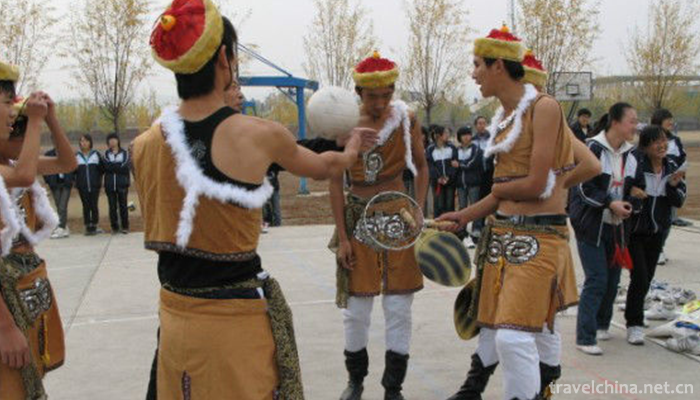
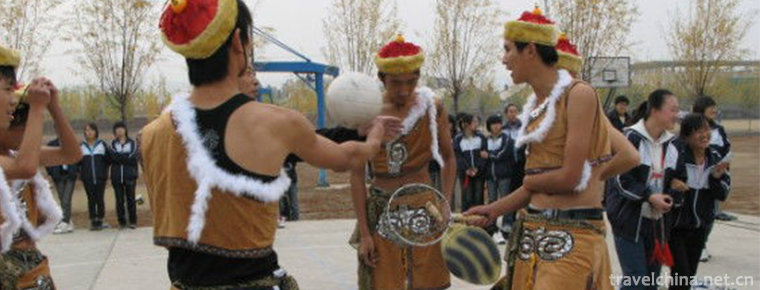
Manchu Pearl Ball
-
Mount Tianzhu Scenic Area
Tianzhu Mountain Scenic Spot, located in the west of Qianshan City, Anqing City, Anhui Province, is known as "the first mountain in the Yangtze River and Huaihe River" for its main peak
Views: 151 Time 2018-12-08 -
Kongtong Mountain Scenic Spot
Kongtongshan Scenic Area is located 12 kilometers west of Pingliang City, Gansu Province. It overlooks Xi'an in the east, Lanzhou in the west, Baoji in the South and Yinchuan in the north
Views: 240 Time 2018-12-12 -
Black Valley Scenic Area
Black Valley, National AAAAA Tourist Scenic Spot, National Forest Park, National Geopark, China's Best Leisure Mountain, China's Best Green Low Carbon Tourist Leisure Spot
Views: 123 Time 2019-01-13 -
Mount Tais Flower Age
Taishan Flower Age Scenic Area in Tai'an City, Shandong Province, is a large-scale agricultural tourism cultural project with five functions of entertainment, sightseeing, picking, catering
Views: 305 Time 2019-02-13 -
Firing Techniques of Dangyangyu Twisted Tissue Porcelain
Dangyangyu Twisted Tissue Porcelain, a special product of Dangyangyu Village, Xiuwu County, Henan Province, is a product of China's National Geographic Indicators.
Views: 194 Time 2019-04-25 -
Mongolian Khantin Music
The most important component of Mongolian traditional music is court music, which is Mongolian Khan music. Successfully selected into the fourth batch of national intangible cultural heritage list.
Views: 136 Time 2019-06-03 -
Daoism in Northern Shaanxi
As one of the traditional folk songs in northern Shaanxi, Daoqing in northern Shaanxi was originally called "Qingjian Daoqing". Later, because "Longdong Daoqing" and "Shenchi
Views: 181 Time 2019-06-13 -
Traditional Manufacturing Techniques of Preserved Vegetables
Fuling mustard was created in Guangxu 24 years of Qing Dynasty (1898). It has been popular with consumers since it came out, and its influence has been increasing. Fuling traditional handcrafted musta
Views: 173 Time 2019-07-16 -
Deep Drilling and Drawing Techniques of Salt in Zigong Well
Zigong well salt deep drilling technology, the local traditional technology of Zigong City, Daying County, Sichuan Province, one of the national intangible cultural heritage.
Views: 252 Time 2019-08-16 -
Luzhou natural resources
The total amount of water resources in Luzhou is 6.657 billion cubic meters per year. The groundwater reserves are rich, reaching 1.065 billion cubic meters per year, among which Xuyong and Gulin counties in the south are the richest. The structural fissure water in the south
Views: 361 Time 2020-12-14 -
Deyang Education
By the end of 2018, Deyang had 856 schools, with 33000 full-time teachers and 543000 students. Among them, 339 primary schools enroll 32000 students and 185000 students; 123 junior high schools, 28000 students and 80000 students; 23 senior high schools
Views: 370 Time 2020-12-14 -
Guangyuan tertiary industry
In 2018, the total social fixed asset investment in Guangyuan was 67.221 billion yuan, an increase of 14.1% in the same caliber. Among them, investment in fixed assets was 64.721 billion yuan, an increase of 16.4%.
Views: 329 Time 2020-12-15


